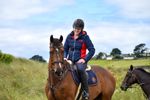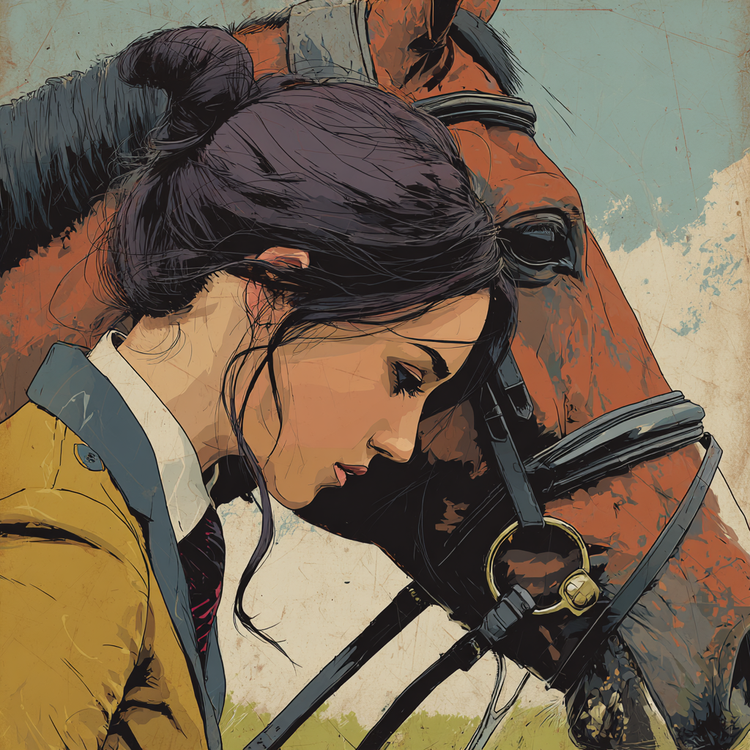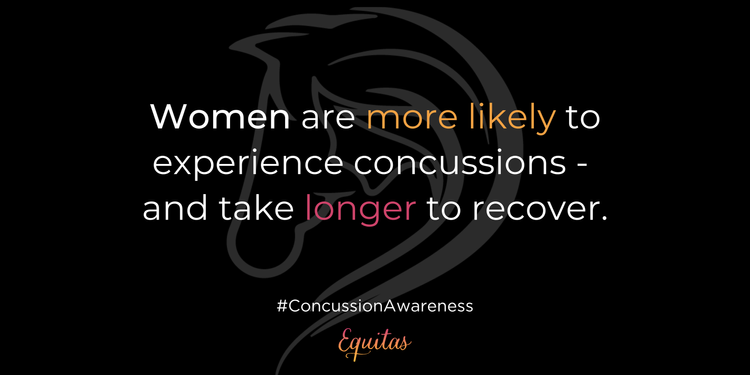Why does it change?

In my opinion, professional sports are one of the most blatant examples of gender inequality. Most of these sports are sex-segregated based on the assumption that men have an unfair physical advantage. However, in most of these sports female athletes are also paid a fraction of what their male counterparts make. Women’s sports teams are also poorly marketed and rarely televised which leads them to have smaller followings that generate less revenue. The successes of women in sport are also often downplayed compared to those of men. Many people believe that these problems are not correctable and that they are just the way things are…
In theory, equestrian sports are equal. Men and women compete against each other from the grassroots level right up to the top of the sport. Equestrian sports are currently only one of two categories at the Olympics in which men and women compete directly, along with sailing. We all follow the same rules and compete for the same prize money, however, does that mean we have equality within the sport? In many ways, equestrians are the trailblazers of gender equality in sport but with this comes a huge responsibility to analyse how this equality actually works within our sport.
Equestrian sport developed from military origins and was originally practised by men only. However, from the mid-twentieth century, equestrian sport was opened up to civilian participants, and this included women, who were allowed to compete against men from this early time. Despite its origins horse riding is now frequently associated more with girls and women. However, although girls and women may dominate equestrianism in numbers, the elite levels of equestrian sport are still male-dominated. When you start to look at the top athletes competing and winning at an international level, there is a disproportionate number of men on the winning podiums compared to the level of women at the grassroots level. There are obviously many opinions on this, but my goal for this article is merely to shed light on an ongoing imbalance and open up this discussion among the equestrian community.
The majority of junior and amateur level riders seem to be made up of predominantly women. If you take a look at a lesson in your local riding school or attend a pony club competition, it is mostly girls that you are going to see riding those ponies. However, men still dominate the top levels of the sport both professionally and internationally. Many equestrian governing bodies are male dominated. Many top level course builders and trainers are men. In 2018, dressage was the only equestrian sport at an Olympic level in which the ratio of women competing was higher than the number of men. High-level sport continues to be seen as incompatible with female gender norms, because they are seen to clash with the widely accepted role of women as primary caregivers. Hopefully, as new generations of riders grow and develop, we will see this change.
The relatively low representation of women at the top levels of the equestrian sport may be due to a range of barriers. Firstly, as many of the selectors and trainers for the higher levels are male, they may act as gatekeepers to young riders aiming to reach these levels. Many riders experience marginalisation due to their socio-economic background and do not have the contacts within the high levels of the sport that their competitors may benefit from. This, of course, can be a problem for both men and women but many women feel their gender adds to their invisibility when it comes to selection events. Some male riders may stand out to selectors purely due to their scarcity.
Alternatively, another barrier may be due to women giving up their own riding careers to support partners or start a family. Some women choose to take a hiatus from riding after they have children, some become too risk-averse once they have others depending on them and some are simply just too busy raising a family. With many sports women can complete their careers at an elite level before having children. However, this is not possible in equestrian sports as women usually reach the peak of their career during their childbearing years. Riders usually do not reach the upper levels of the sport until at least their mid to late twenties and can continue to compete at a national and international level into their fifties and beyond. Unlike many jobs where you can take maternity leave, the equestrian sport doesn’t allow for time off. Women end up having to make a choice between having children and keeping their career at the top level and I think this decision is one that makes our sport very unequal in terms of gender. You can argue that they can regain their spot and yes that does happen, but how long does it take? Will they lose their sponsorships? Will future selectors see them as a gamble? Regardless of what women choose in this regard, the decision will affect them significantly because their male counterparts can continue to compete even if they decide to start a family.
I know you can argue that in recent years more women are being recognised at the top levels of the sport and they are. But that has taken huge amounts of work from the people who are breaking through the glass ceiling within the elite levels and who is shining a light on these women? Regardless of your gender, I’m sure you can agree that while we do get to compete on an equal level, our equestrian sport is far, far from truly “equal.”





